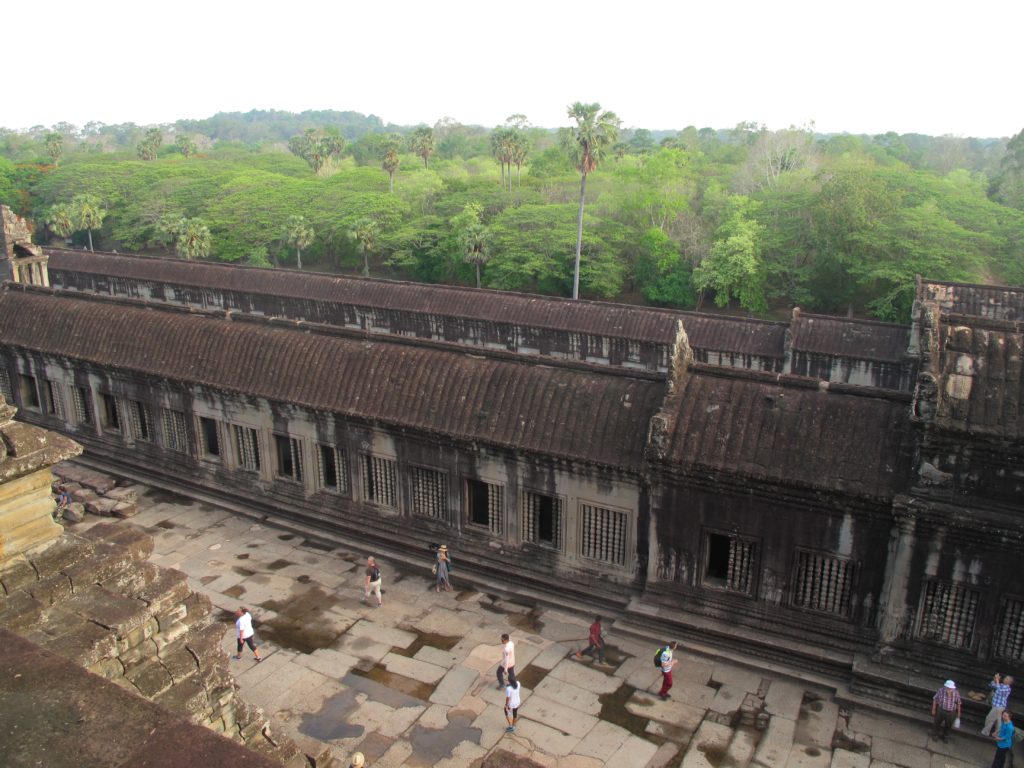The pothole-filled dirt roads between the Siem Reap airport and our hotel near the city center were quite a surprise. Coming from the modern metropolis of Bangkok, we expected more of the same from the third-largest city in Cambodia. It was also low season, and our cab driver spent most of the ride lamenting that we had already reserved an Angkor Wat tour guide — he only came up in the airport taxi rotation once every two days, and depended on converting rides into tours to get by.
We got checked into our hotel, and Jason’s sister Becca arrived a couple hours later on a flight from China (where she had spent the last few weeks as part of her business school program).

The “downtown” of Siem Reap was just a few blocks from our hotel, and on the way we passed a variety of restaurants, massage parlors, and “fish spas” where the fish eat the dead skin right off your feet.

It was clear that tourism was the backbone of the local economy, and was interesting and a bit sad to see what that looked like in off-season. Every block we had to decline at least 5 offers for rides from tuk-tuk drivers, some of whom had devised clever tactics like making funny noises to grab our attention.
We soon arrived at pub street, a roughly two-block span of pubs and restaurants fringed by large souvenir markets. It was much more lively than we expected, with lots of people in the street and loud bass bumping from the “Temple Club” near the end of the block.
At a safe distance from the bass, we picked a spot to enjoy some Trump-themed snacks

and the ubiquitous 50 cent drafts.
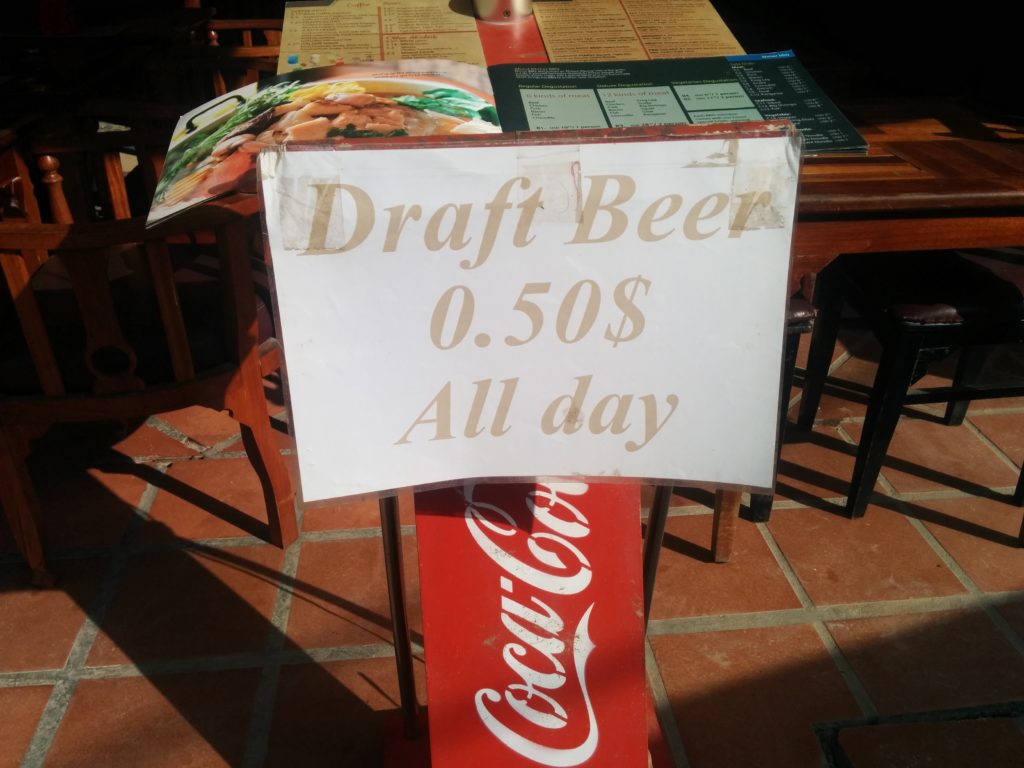
Cambodia primarily uses US Dollars for currency, with the local Cambodian Riel used only as a substitute for US coins. This was especially convenient for us, since our stash of reserve USD had been waning and the ATMs in Cambodia were the first we’d seen that dispensed Benjamin Franklins since leaving Uruguay.
After enjoying some people watching on pub street, we decided to try a cocktail-making class at a cozy bar called Asana.
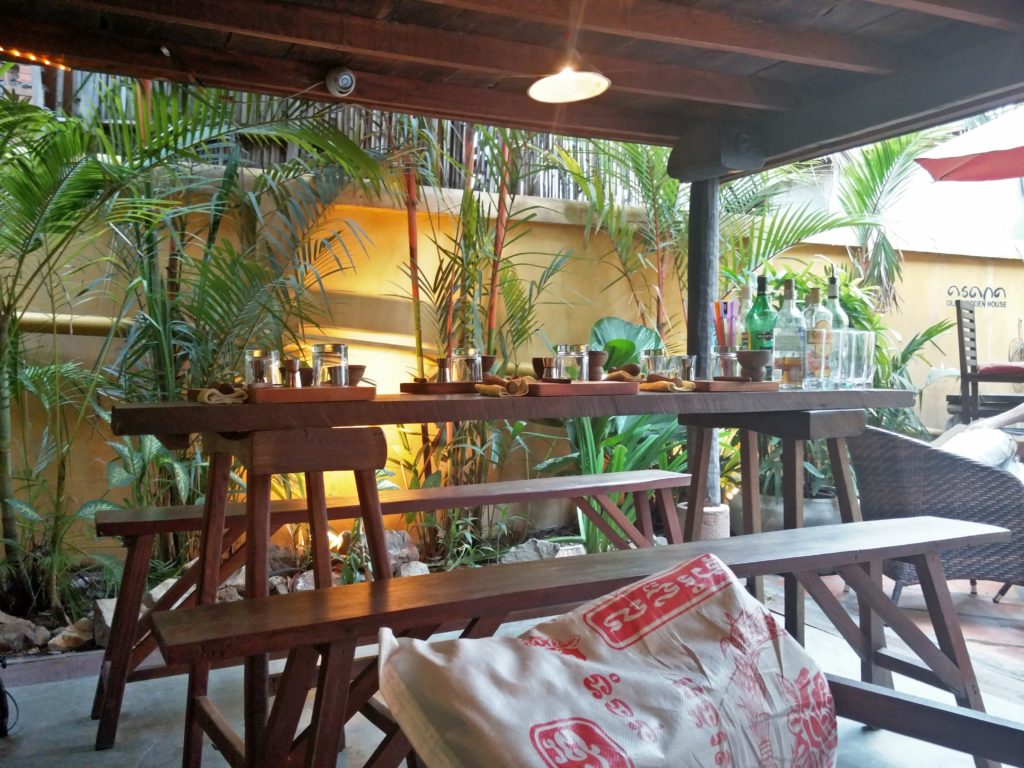
The teacher helped us make several yummy cocktails with local ingredients including lemongrass, ginger, and basil, and then we got to improvise our last drink.

While we were quite pleased with the cheap beer and nice cocktails in Cambodia, we were less excited about Khmer food (the Khmer people are the predominant ethnic group in Cambodia). Many of the dishes sounded similar to what we’d just been loving in Thailand — tom yum soups, curries, papaya salads — but they ended up being uniformly non-spicy and less flavorful. Fortunately, we found some tasty options for Sarah’s birthday, including a spicy Indian lunch and a five-course dinner of French-Cambodian fusion.
Siem Reap’s history is incredibly rich and the area surrounding the city is home to more than 50 temples (including Angkor Wat, the largest and most famous) built between the 9th and 13th centuries. The next morning, our guide Votha picked us up at 4:45 for our obligatory tour.
After we collected our tickets, parked at a secret back entrance, and walked for a little while, we caught our first glimpse of Angkor Wat in the pre-dawn light.

We then walked around to the front of the temple, and waited (with hundreds of other tourists) for the sun to rise over this reflecting pool.
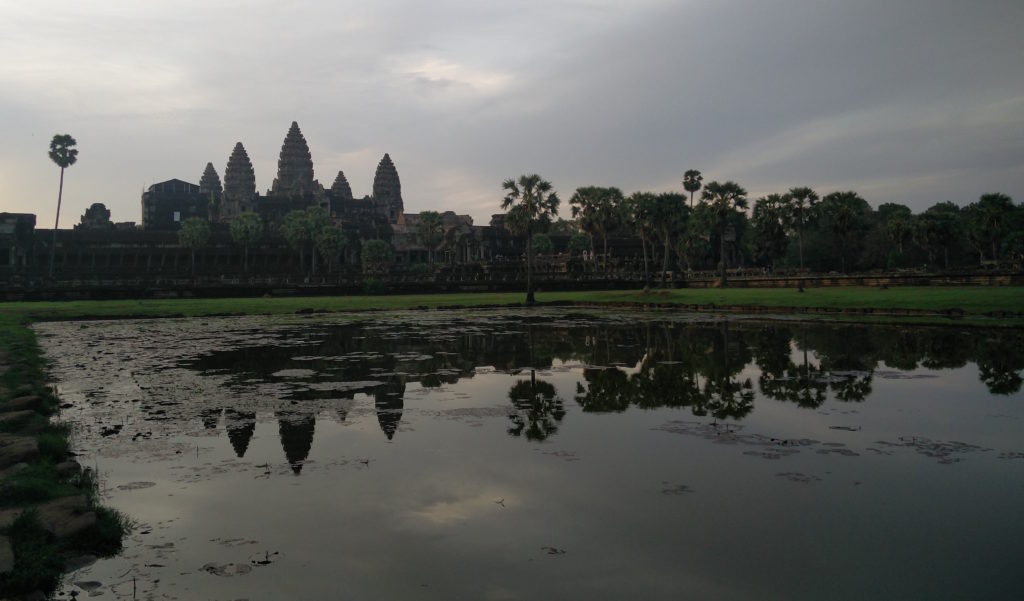
Angkor Wat is the largest religious monument in the world, and we spent a couple hours exploring while Votha provided explanations and historical context. The temple was built in the 12th century by King Suryavarman. The central towers symbolize Mount Meru, the home of the gods and an axis-mundi — a cosmic axis that connects heaven and earth. This design was intended to provide a home for the Hindu god Vishnu and to demonstrate the Angkor kindgom’s and its king’s central place in the universe.

While originally built as a Hindu temple, it was later converted to a Buddhist temple by the greatest of the Angkorian kings Jayavarman VII. This transition included adjustments to some of the many intricate carvings such as the addition of shirts on formerly naked sculptures.
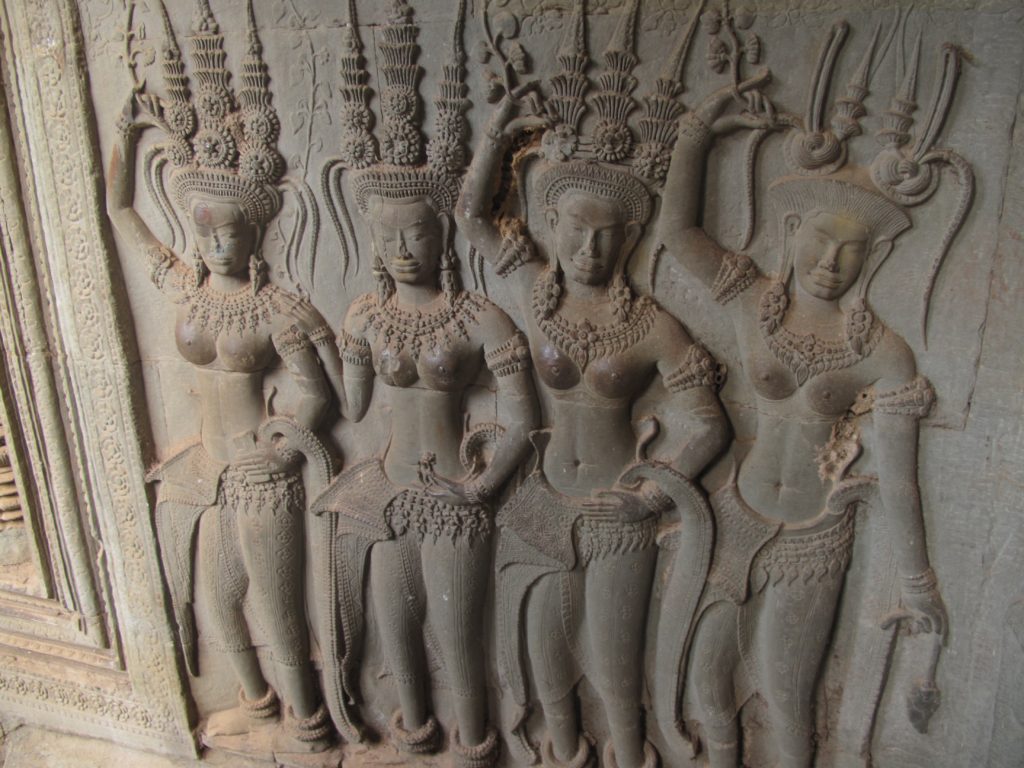
Fortunately, Angkor Wat was mostly spared during the reign of the Khmer Rouge, who between the 60s and 90s were responsible for the deaths of more than 25% of the Cambodian population and the destruction of countless cultural artifacts. It was devastating to hear Votha’s stories about these “terrible times”. We were heartbroken to hear the story of his grandparents: when the Khmer Rouge asked his grandfather who the woman next to him was, they shot her after he identified her as his wife.

The temple has three levels surrounded by walls, and we made our way upwards as the sun (and temperature) started to rise. From the topmost inner gallery, we had great views of the entire complex

On the way out, we stopped to admire this massive carving of a tug-of-war between 100 agents of good and evil (called the Churning of the Ocean of Milk),
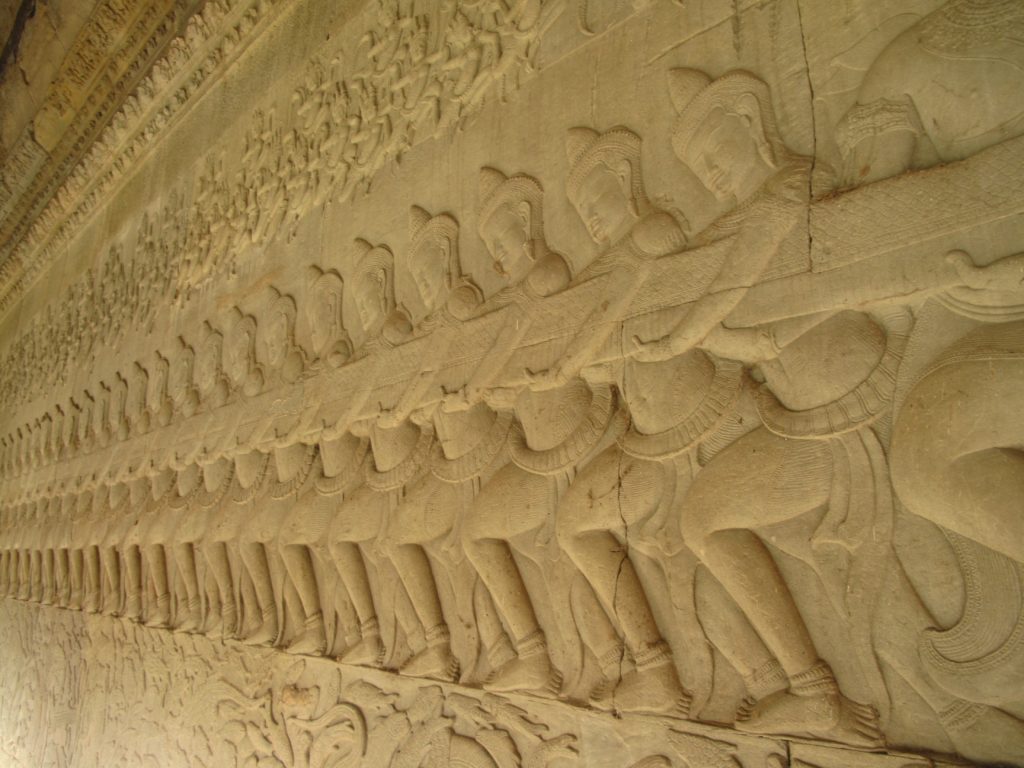
and watched a troop of monkeys climb the temple, likely on the prowl to separate some unsuspecting tourists from their lunches.
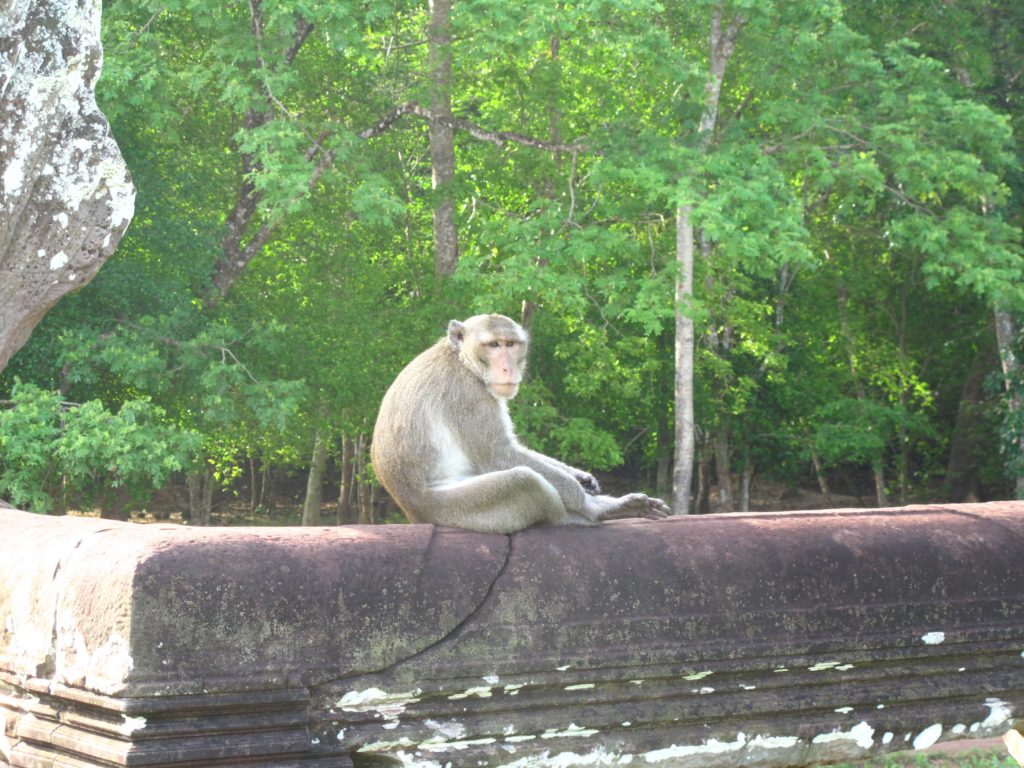
Back in the car, Votha cranked the AC and we had a much-needed respite from the increasing heat. We toured some of the surrounding monuments on the way to our next stop, the Angkor Thom complex where we visited the Bayon and Baphuon temples. On the drive, Votha told us about some recent discoveries made by a team of scientists using airborne LIDAR to better understand the Angkor empire. The laser scans revealed several medieval cities hidden beneath the forest floor. The cities and their connecting networks are so big that the scientists are proposing that the Angkor region would have been the largest empire on earth during its peak in the 12th century!
As we approached Baphuon, a temple dedicated to Shiva, we walked through a forest of many thousands of carefully placed and numbered stones. Back in the 50s, the temple was falling apart and it was decided that the only way to save it was to take it apart and reassemble it stone-by-stone. A French-led effort succeeded in the dismantling and numbering of every stone while keeping detailed records of where it belonged in the overall structure (this was necessary because the temple was constructed without mortar, and every stone is a slightly different shape). These records were all destroyed during the Khmer Rouge, but somehow the reconstruction was finished without them just a few years ago (although with more than a few stones left-over).
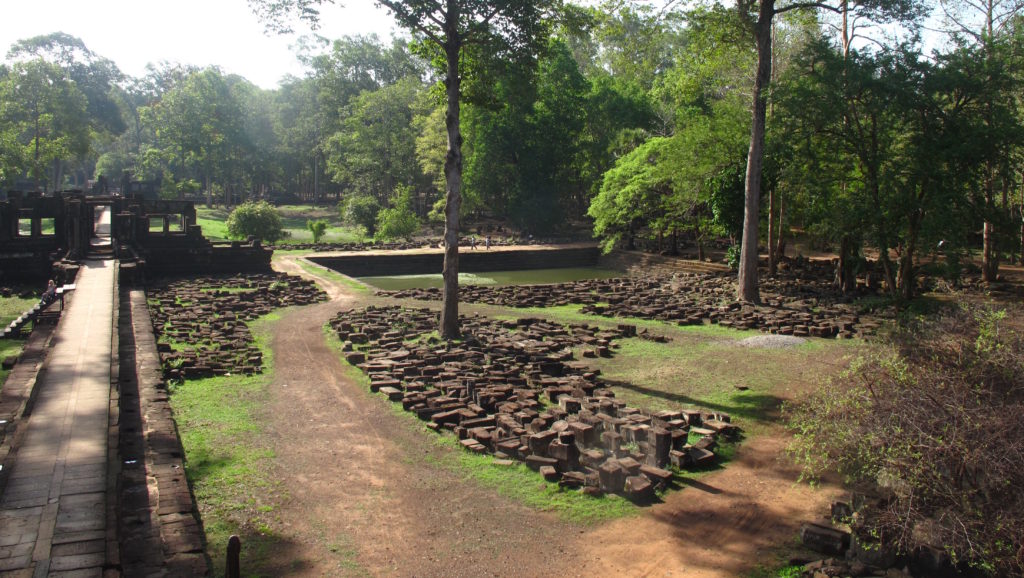
When we were done exploring Baphuon, we walked to the nearby temple of Bayon.

As we approached, we were haunted by the huge faces surrounding each of the pillars. The faces (originally 216 of them) represent either the king Jayavarman VII who led the building of the temple or Lokesvara, the Buddhist bodhisattva of compassion, depending on who you ask.
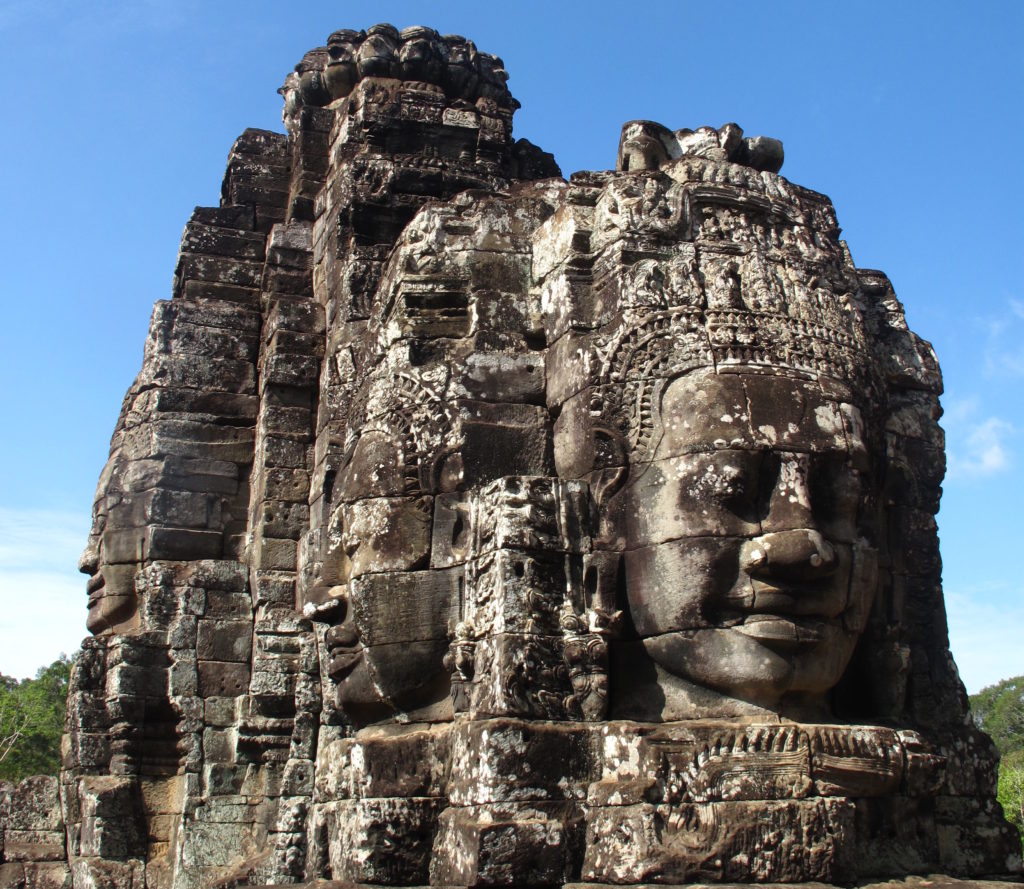
While you might not be able to tell from this picture,

a few minutes later Jason almost passed out from the heat. We retreated to the car for another AC break, and an early lunch.

Afterwards, we visited two more temples. The first was called Ta Nei, and it was very peaceful: found deep in the jungle, we were the only visitors, quite a contrast from the throngs of people at Angkor Wat.
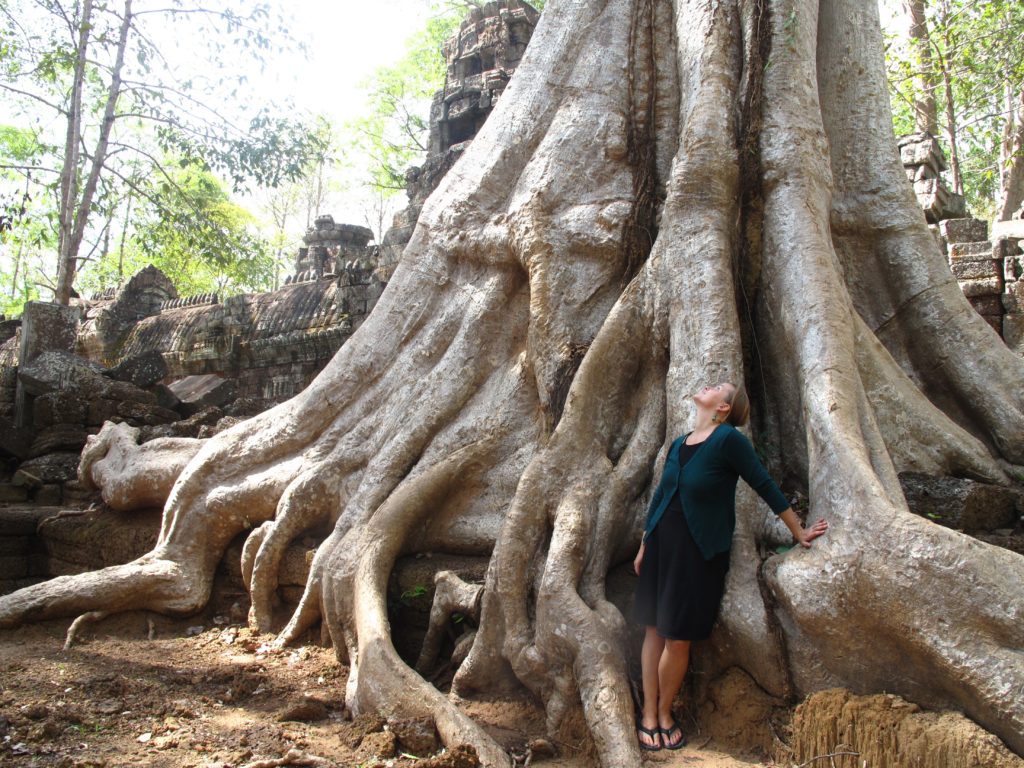
We also visited Ta Prohm, which is famous for being featured in the Tomb Raider movie and, as a result, was much busier.
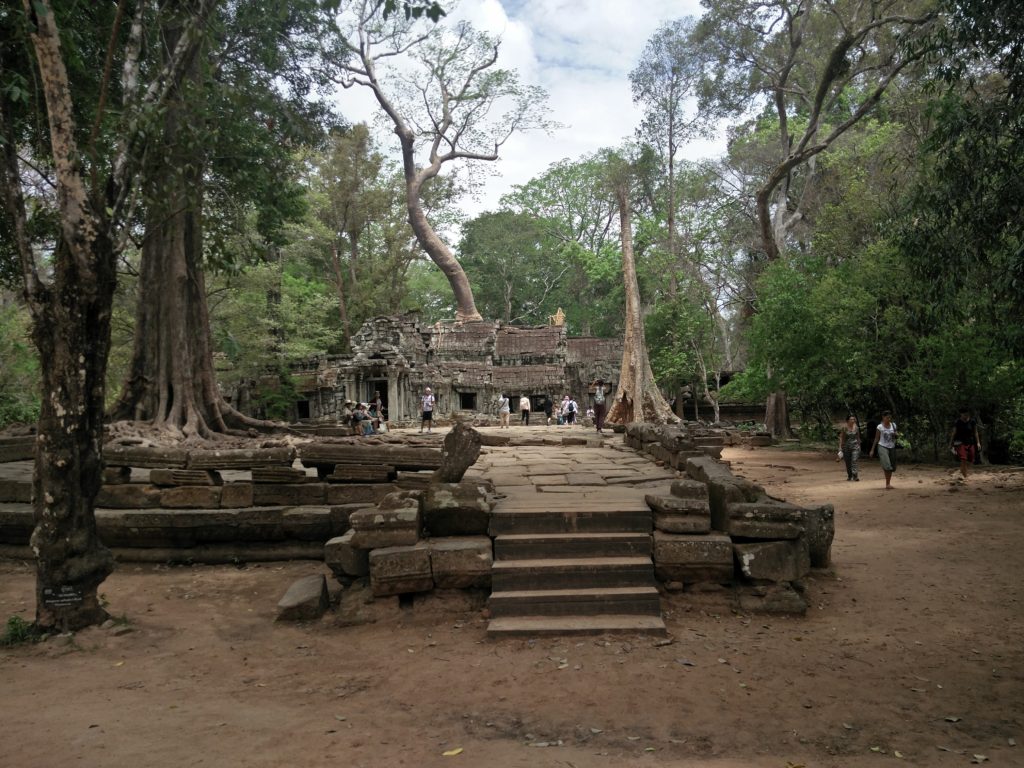
We hadn’t seen Tomb Raider, so were instead awed by the trees growing on and through the ancient structures.

Jason was again hitting heat overload, so we decided to call it a day and go cool off in our rooms. On the way to the car, we stopped to listen to a band of landmine survivors playing beautiful music. And while driving back, we had an interesting discussion with Votha about Angelina Jolie, who (in addition to starring in the Tomb Raider movie) has adopted a Cambodian child and donated lots of money to improve the conditions in Cambodia. She’s also currently working on a film adaptation of First They Killed My Father, a memoir of one woman’s experience through the “terrible times.”
That evening, we went to see the Phare Circus, which we had heard we couldn’t afford to miss. The production was based on one woman’s story of surviving the Khmer Rouge, told through various feats of acrobatics and physical prowess.
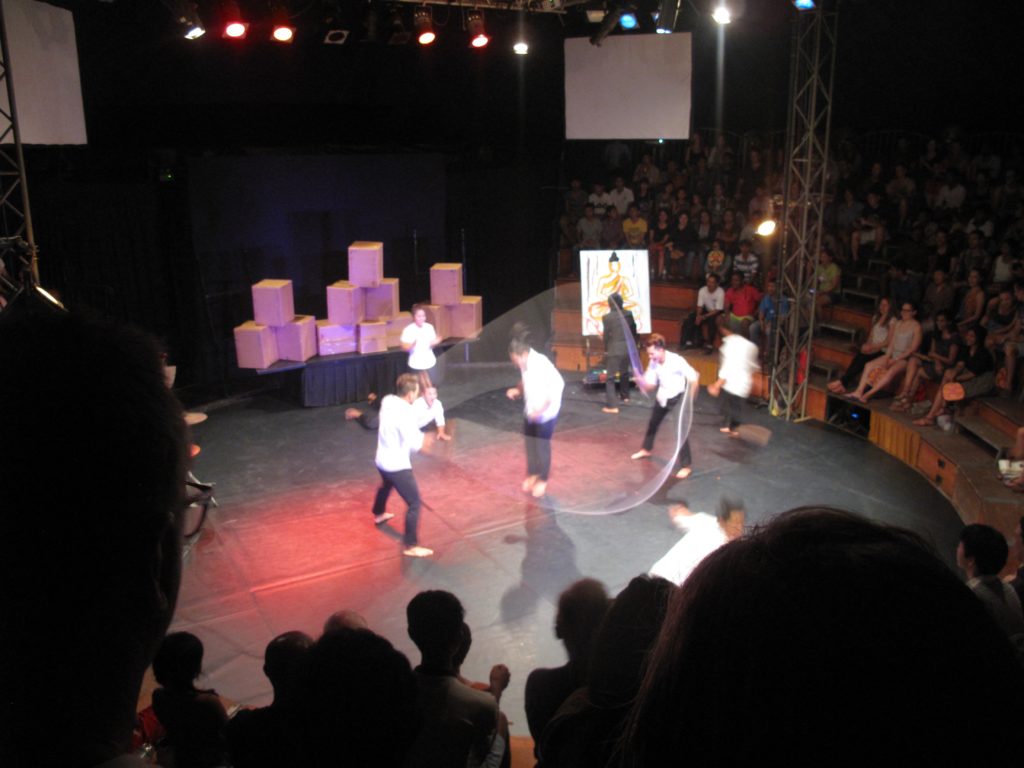
Many of the performers are refugees and orphans, and while the props were simple — cardboard boxes, rope, tin cans, and boards — the energy the acrobats exhibited made the show one of the most exciting and engaging we’d ever seen.

The money from ticket sales all goes back into the Phare organization, which invests it in a school for children focused on the arts, with more than 1000 daily attendees. We were really inspired by the performance and impressed by this sustainable model for change.
Between the awe-inspiring temples, friendly Khmer people, and 50 cent beers we really enjoyed our three days in Siem Reap, but Becca was on a tight schedule so it was time to move on to our other Cambodian destination: the island of Koh Rong.
